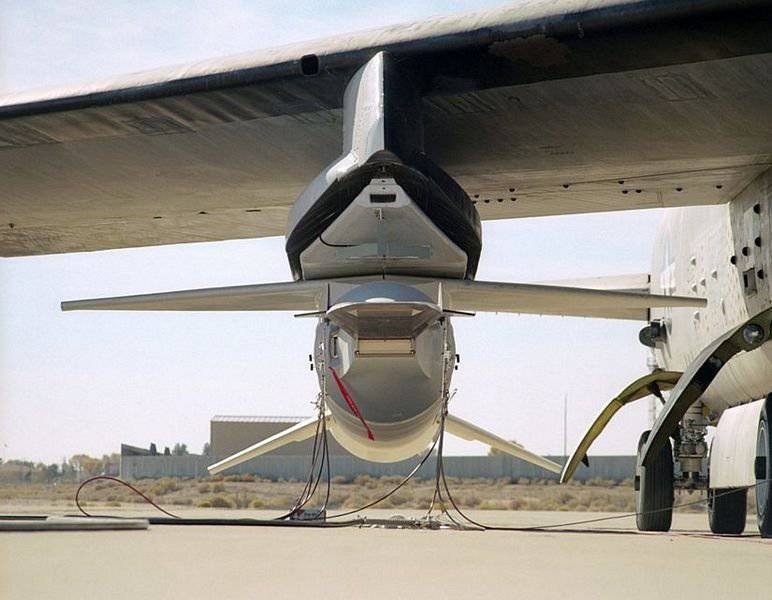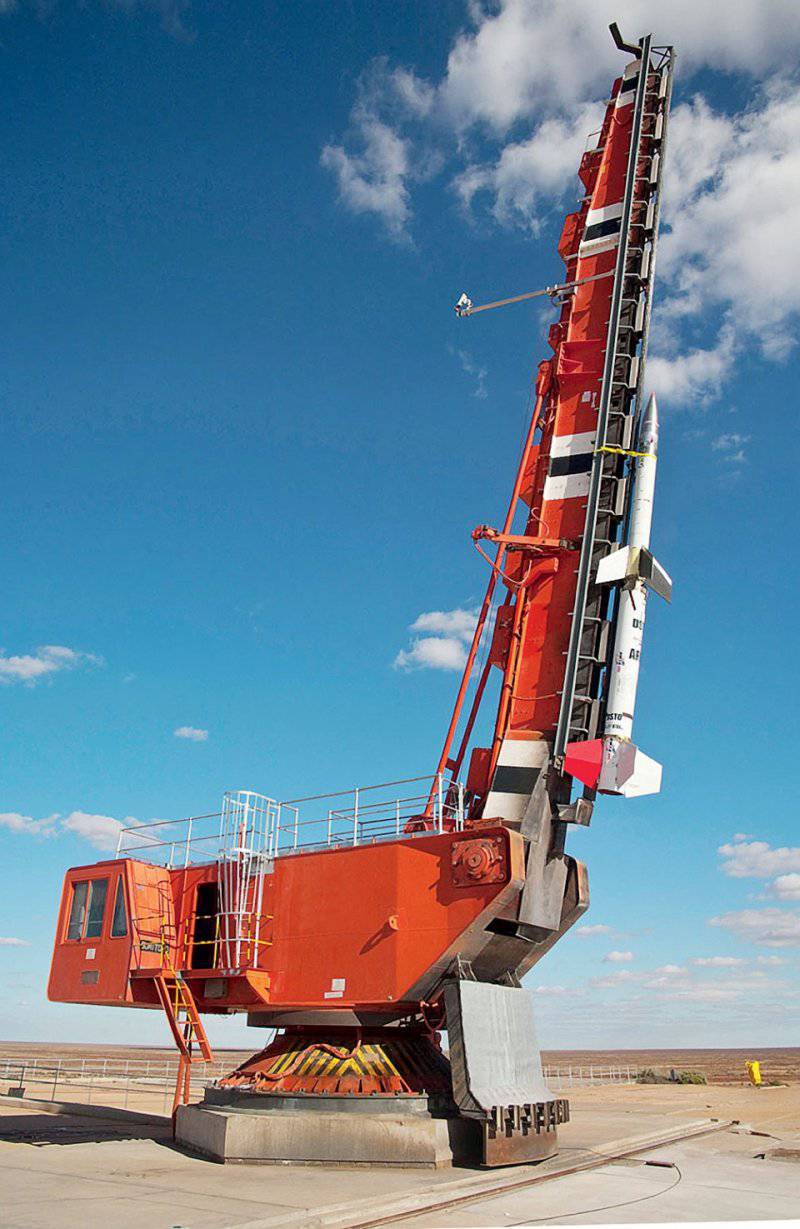Hypersound bet
Half a century has already passed since the USSR and the USA realized the potential of hypersonic weapons and began searching in this direction. From the exotic ASALM strategic missile project of the late 1970s to recent flights drone-demonstrator Boeing X-51A has passed more than 30 years, and it was still not possible to achieve stable operation of a ramjet engine at hypersonic speeds. This area of research is showing discouragingly slow progress. However, the US Air Force has released a new strategic plan for R&D, and it clearly shows that speed remains one of the top priorities of the US military.
This time the plan is measured not in years, but in decades. However, the design tasks and deadlines for their implementation are indicated in it with the utmost precision, and the financial part of the strategy involves the necessary investments, even in spite of difficult times.
The current strategy has two main time horizons. Already by 2020, it is planned to develop a hypersonic strike armament, that is, a cruise missile with a hypersonic ramjet engine.
By 2030, a reconnaissance aircraft, probably piloted, should be born. “We consider these terms reasonable in terms of investment,” says Christopher Clay, a specialist in the Air Force’s R & D unit, “but in case of urgent need we can accelerate.”
The protagonists, of course, will be the Air Force Research Laboratory (AFRL) and the Agency for Advanced Defense Research and Development DARPA. A number of foreign developers will join them. It is planned to use the developments of all projects that have ever been conducted, but were closed, canceled or suspended due to lack of funds.
These include the X-51A, which so far has measured the last test flight, and the Blackswift project, which is closed for financial reasons, is a unique aircraft with a hybrid power plant combining a turbojet engine and a scramjet in one unit.
“A number of projects have been launched in the AFRL, but none of them have gained critical mass. Therefore, it was decided to choose only two and concentrate entirely on them, ”explains Clay. And the first and previously developed at a good pace, but the second for many years trampled in one place.
A quick death
The first, relatively successful project implies the Boeing X-51A. Despite only one half successful and two unsuccessful flights of the scramjet demonstrator, it is still planned to build the fourth and final sample by the middle of 2013. “Leadership in the field of air power is still dependent on research in the field of scramjet,” said Charlie Brink, program manager for X-51A. “The image of a vehicle capable of flying 600 nautical miles in ten minutes is gaining more and more weight in the eyes of the military.”
In May 2010 of the year, during the first flight of the X-51, its engine ran for 140 seconds from the planned 300. Damage to the connection between the engine and the nozzle led to a premature termination of the flight, but the scramjet managed to accelerate the car to 6,5 M. During the second flight in June, the rocket engine of the accelerating stage did not start, and the August third ended with loss of control due to the steering failure. By the fourth flight, all identified defects should be corrected.
“The fact that funding was found in the X-51A crisis conditions underlines the level of interest in hypersound,” Brink says. It is he who will lead the development of the hull and engine in the HSSW high-speed strike weapons project.
The culmination of the demo program, which starts in March 2013, should be military exercises by the end of the decade. "We are striving to start flying already in 2017, and if everything goes well, they will continue in 2018 and 2019," said Christopher Clay, specifying that everything is planned to be six to seven flights. The key task of these tests is to gain practical experience in various aspects of hypersonic technology, from engines to guidance systems. The purpose of the demo program is to successfully hit targets thousands of miles away.
Prototypes will need to demonstrate not only an accurate strike, but also compatibility with existing aviation systems. The device will be placed both in the bomber compartment and under the wing of the fighter. Advanced guidance systems, warheads with a different nature of destruction, as well as effective disposable propulsion systems for booster stages will be developed.
For the first time, a plan to develop high-speed weapons provides for some of the international cooperation. The field for joint work can be the development of compact boosters - one of the key technologies of the plan for high-precision weapons. Other areas of possible cooperation are guidance systems operating in a wide range of speeds, high-speed orientation systems in the absence of GPS and satellite communications, aerodynamic configurations, composite materials, and thermal protection systems.
Most of the technical requirements for the project are formulated on the basis of a detailed analysis of the likely combat missions. However, the main ones are very simple and obvious - it is light weight and moderate cost. The price of new weapons should not exceed the cost of conventional subsonic weapons more than doubled. At the same time, it should hit remote targets in a matter of minutes. The HSSW prototype will be based on the Eglin Air Force Base in Florida.
Transitional age
For the second project - a hypersonic reconnaissance-strike aircraft - the Air Force outlined the requirements no less clearly. It must be absolutely self-sufficient in the conditions of inaccessibility of the navigation and communication satellites, accelerate to speeds above 5 M and at the same time take off independently from the usual runway.
Since 2010, US Air Force strategists have been aiming at Mach 4. However, the repeated analysis of possible combat missions with the use of a hypersonic aircraft led to an unambiguous increase in the desired speed to at least 5 M. I had to start searching for technologies that would allow to achieve this goal.
The project of a manned aircraft is much more expensive and risky than the HSSW. It requires the development of an engine that can function at subsonic, supersonic, and hypersonic speeds.
During takeoff, it will work as a turbojet, then go into direct mode, and when switching to hypersound, turn into a scramjet.
Trying to realize such a motor, the creators of the Blackswift project at one time faced the main problem: the turbine of the subsonic engine does not withstand the temperatures associated with the movement on the hypersonic.
Of course, the hypersonic flow does not pass through the turbine directly, but even the neighborhood with the scramjet acts on the delicate node is detrimental. Therefore, the focus of research to be done on heat-resistant materials, including composites with a ceramic matrix, and the system of distribution and dissipation of thermal energy.
A valid engine must be developed by 2020. Despite the negative result of past tests, their analysis suggests that the program is quite realizable. Flight tests will take place with a full engine mounted in a reduced-size fuselage. The device will become a test platform for many other systems: control mechanisms, navigation and guidance, new materials, sensors.
“The most difficult technological challenge is to switch to hypersound. We have to explore the possibilities of refinement of standard turbo engines available for sale in order to expand their speed range. It is necessary to work on the scramjet, on the contrary, to reduce its minimum speed.
- While we can not force the speed ranges of the turbine and scramjet at least a little intersect, - says Christopher Clay. “But we have to design and test much larger scramjet, in 8 and even 16 times the power of X-51A.”
The X-51A experience has shown that technology can be well recognized only during real flights. Thousands of talented theoretical engineers will not replace the prototype test launch. The plan of the US Air Force, including financial, this fact takes into account. So within the next decade we will see a lot of interesting flights.
The development of a manned hypersonic aircraft will require the creation of a complex engine that combines a turbojet engine for subsonic and supersonic speeds, as well as a scramjet for hypersound. Work on this engine will require the development of at least four key technologies.

An experimental NASA X-43 drone set a speed record for aircraft with an air-jet engine, speeding up to 10617 km / h, or 9,68M. The record flight of the third X-43 prototype took place on November 16 of the year 2004. The Pegas accelerating rocket launched from the B-52 bomber dispersed the vehicle and separated at 29000 m. In 10 seconds of the scramjet X-43 overcame 24 km, rising to an altitude near 34000 m. Then, the disposable device was submerged in a calorie from calipers using calipers for XNUMX m. coast.
In the photo: the device HiFiRe was a logical continuation of the Australian program HyShot. Unlike its predecessor, he demonstrated an independent, long flight with the current scramjet.


Information